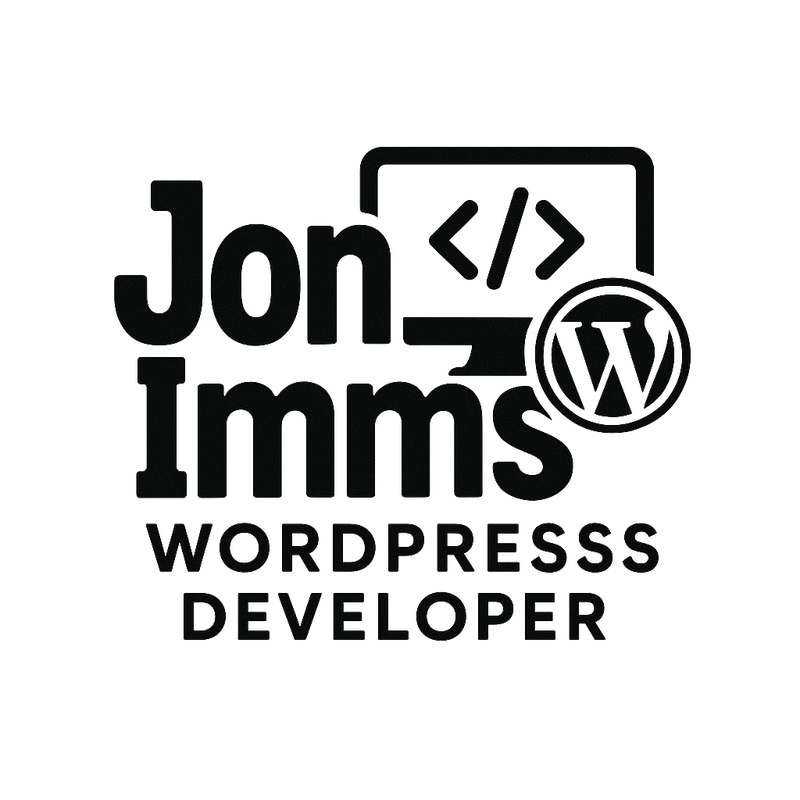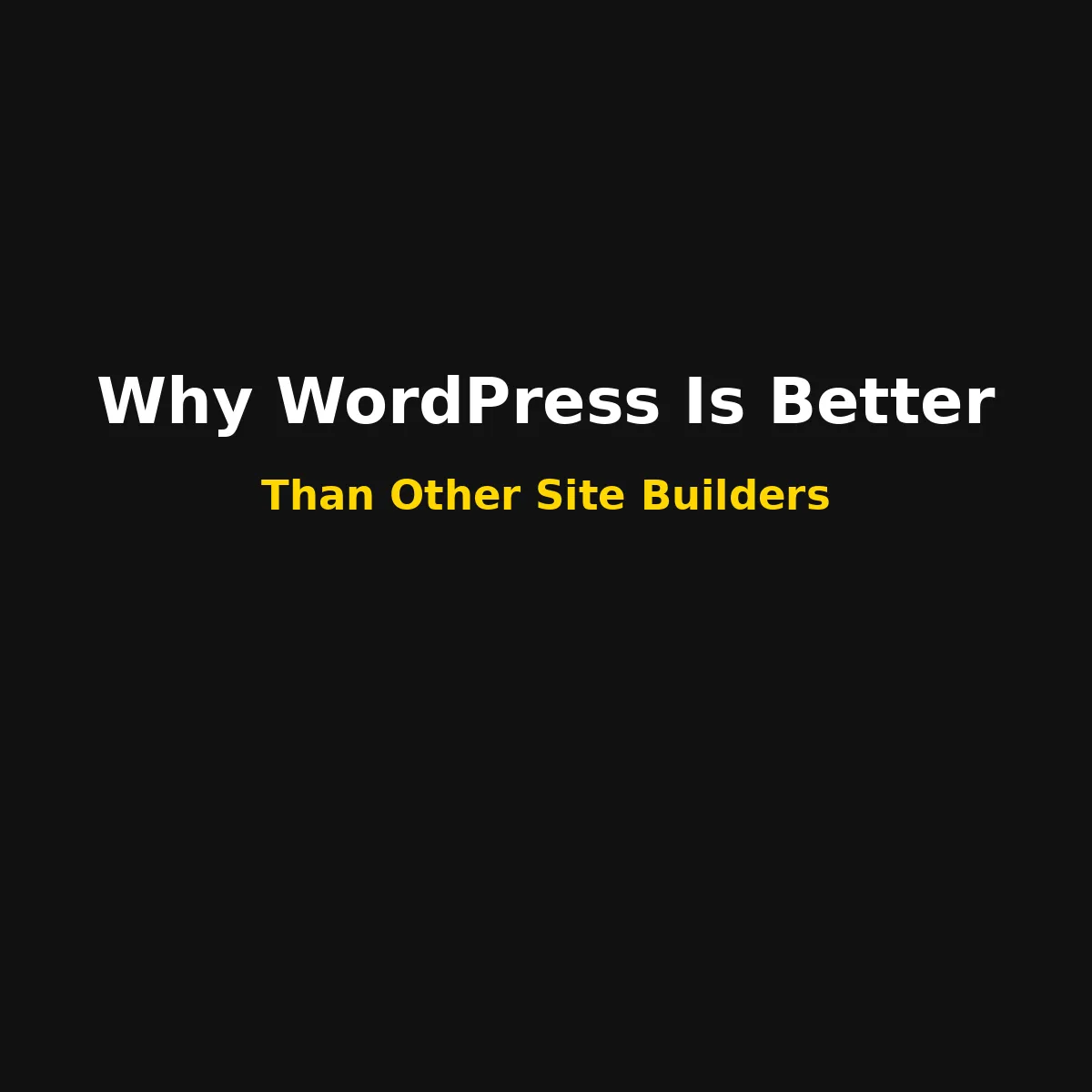Website builders have evolved rapidly in the last decade. From drag-and-drop platforms like Wix and Squarespace to more advanced design tools like Webflow, users today have countless options to get a site online. Yet WordPress—an open-source CMS that turned 20 in 2023—still powers over 40% of the internet.
So what gives? How does WordPress remain so dominant in a space filled with polished new platforms promising ease and modern design? In this article, we’ll dive into what truly makes WordPress superior to other builders—not just in theory, but with real-world examples, developer insights, and actual code.
1. You Own Everything (Open Source = Real Freedom)
When you use WordPress, you own your website—period. You can export your database, theme, uploads, plugins, or even host it locally. That level of autonomy is impossible on hosted platforms like Squarespace, Wix, or Webflow, where you’re essentially leasing your site. If they go down, raise prices, or discontinue features, you’re at their mercy.
This freedom is made possible by the GNU General Public License (GPL), which gives anyone the right to use, modify, and distribute WordPress freely.
# Export your full WordPress database
wp db export site-backup.sql
# Export media library
wp media export wp-content/uploads
# Migrate or reinstall your theme
wp theme install frost --activateBy contrast, Webflow users cannot export CMS collections, user accounts, or eCommerce logic. You’re locked in.
2. Unlimited Customization with Code
WordPress is developer-first. Want to hook into a form submission, call an API, or create a custom admin page? Go for it. You’re working with PHP, JavaScript, HTML, and CSS—all open and hackable. Most other builders wall you off from the underlying engine, limiting creativity and automation.
// Register a custom REST API endpoint
add_action('rest_api_init', function () {
register_rest_route('myplugin/v1', '/status/', [
'methods' => 'GET',
'callback' => fn() => ['status' => 'WP is awesome'],
]);
});Other builders give you some extensibility—like Velo for Wix or Webflow Logic—but they’re not fully server-side, and you’re confined to their scripting rules and infrastructure.
3. True SEO Power
WordPress shines when it comes to SEO. With plugins like Yoast SEO, Rank Math, or SEOPress, you can control everything: titles, descriptions, canonical tags, 301 redirects, schema, OpenGraph, and more. And you can write your own metadata output if needed.
// Output custom JSON-LD schema
add_action('wp_head', function () {
echo '<script type="application/ld+json">' . json_encode([
'@context' => 'https://schema.org',
'@type' => 'Person',
'name' => 'Jon Imms',
'jobTitle' => 'WordPress Developer',
]) . '</script>';
});In contrast, many hosted builders offer only basic SEO control—such as title and description per page. Schema support is minimal or non-existent. You can’t control meta headers at a granular level without a pro plan or workaround.
4. Gutenberg + Full Site Editing = Visual AND Code-Based Power
The Gutenberg editor has matured into a powerful layout system that now supports full site editing (FSE). This means you can visually design headers, footers, templates, and blocks while still having full control over the codebase if needed. Best of both worlds.
You can also register your own blocks, patterns, and inner block configurations. This modular approach keeps your site clean, efficient, and scalable.
// Example: Registering a custom dynamic block
register_block_type('jonimms/latest-posts', [
'render_callback' => function () {
$posts = get_posts(['numberposts' => 3]);
ob_start();
echo '<ul>';
foreach ($posts as $post) {
echo '<li>' . esc_html($post->post_title) . '</li>';
}
echo '</ul>';
return ob_get_clean();
}
]);5. Massive Plugin & Theme Ecosystem
With over 60,000 plugins and thousands of themes, WordPress has a solution for almost anything—eCommerce, bookings, LMS, memberships, SEO, CRM, directories, automation, and more. No other platform comes close in ecosystem scale.
Need a Stripe checkout? A/B testing? AI-generated blog summaries? There’s a plugin for that—or you can build your own.
6. Community, Docs, and Developer Support
The WordPress developer community is one of the largest in the world. Need help with a hook or filter? There’s a Stack Overflow thread. Want to join a local meetup or WordCamp? You’ll find one in most cities. Contrast that with closed platforms—support is limited to ticket queues or premium support tiers.
From the official developer docs to YouTube tutorials and thousands of blog posts, WordPress knowledge is freely accessible.
7. Better for Client Work and Freelancers
Need to hand a site off to a client? WordPress gives you the freedom to host anywhere, set up permissions, and customize the admin interface. Clients can edit what they need and leave the complex stuff alone. There’s no recurring SaaS fee unless you want managed hosting.
With builders like Webflow, you’re stuck paying a monthly fee per project—even if your client doesn’t need CMS access or advanced features.
8. Performance Optimization Is in Your Hands
You can optimize WordPress in nearly infinite ways: caching plugins like WP Rocket or LiteSpeed Cache, CDNs like Cloudflare, database tuning, lazy loading, image compression, and asset bundling via tools like Gulp or Webpack. You can even go headless with Gatsby or Next.js.
Other platforms offer little insight into performance tuning. You rely on their infrastructure—and if it’s slow, you’re stuck.
9. Migration and Portability
Want to switch hosts or export your entire WordPress site? It’s trivial. Tools like All-in-One WP Migration, Duplicator, or just WP-CLI make it easy. Try doing that with Wix or Squarespace—you’ll quickly learn what vendor lock-in feels like.
When WordPress Isn’t the Right Tool
WordPress isn’t perfect. If you’re building a small static landing page and don’t want to worry about updates or plugins, Carrd or Framer may be a better fit. If you’re launching a massive eCommerce brand with POS integration, Shopify might offer deeper tools out of the box.
But for anything that needs long-term scalability, customization, or ownership—WordPress delivers.
WordPress vs Other Platforms: Quick Comparison
| Feature | WordPress | Wix / Webflow / Squarespace |
|---|---|---|
| Code Access | ✅ Full (PHP, JS, DB) | ❌ No server access |
| Plugin Ecosystem | ✅ 60K+ Plugins | 🔶 Limited Apps |
| Theme Control | ✅ Full (via FSE) | 🔶 Visual only |
| SEO Options | ✅ Complete | 🔶 Basic |
| Export / Migrate | ✅ Easy | ❌ Difficult / Locked |
| Performance Tuning | ✅ Granular | 🔶 Minimal |
| Client Handoff | ✅ Own Hosting | ❌ Monthly Locked Plans |
Conclusion
If you’re serious about building for the web, WordPress remains the most powerful and flexible choice. You get control, performance, customization, and freedom—with no gatekeepers or platform limits. Whether you’re a freelancer, business owner, or agency—WordPress gives you a foundation that grows with you.


Leave a Reply